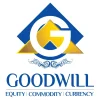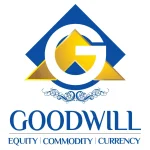Impact on Corpus for 1% Difference in Return Calculator
Disclaimer: While our calculators can help you visualize different scenarios, it's important to remember that market returns are variable and unpredictable. A Goodwill Wealth Management advisor can help you develop a strategy that accounts for market fluctuations.
This calculator demonstrates the power of compounding and how even a small difference in your annual return can significantly impact your final corpus over time. Here’s a breakdown of how it works:
Inputs:
Years you wish to invest: The duration for which you plan to invest your money.
Amount you can invest each month: The regular monthly contribution you will make towards your investment.
Annual increase in monthly investment (%): The percentage by which you plan to increase your monthly investment each year (e.g., to account for salary increases).
Net rate of return (annual): The expected annual return on your investment. This is where you’ll input two different rates to see the impact of a 1% difference.
Calculations:
The calculator uses a formula that takes into account:
Monthly compounding: It calculates the growth of your investment each month, considering the interest earned on the accumulated amount.
Increasing contributions: It factors in the annual increase in your monthly investment amount.
Varying rates of return: It calculates the final corpus for both the initial rate of return and the rate of return that is 1% higher.
Outputs:
Corpus you will accumulate: The total amount you will have at the end of the investment period for each of the two rates of return.
Percentage difference in corpus for 1% difference in return: The percentage difference between the two corpus amounts, highlighting the impact of that 1% change in return.
How it works in practice:
You input your investment details (years, monthly amount, increase percentage).
You enter your expected rate of return.
The calculator computes the final corpus.
You then change the rate of return by +1%.
The calculator computes the new final corpus.
It then calculates the percentage difference between the two corpus amounts.
Key takeaway:
This calculator emphasizes the importance of striving for higher returns, even if the difference seems small. Over long periods, the power of compounding can magnify that 1% difference into a substantial amount.

